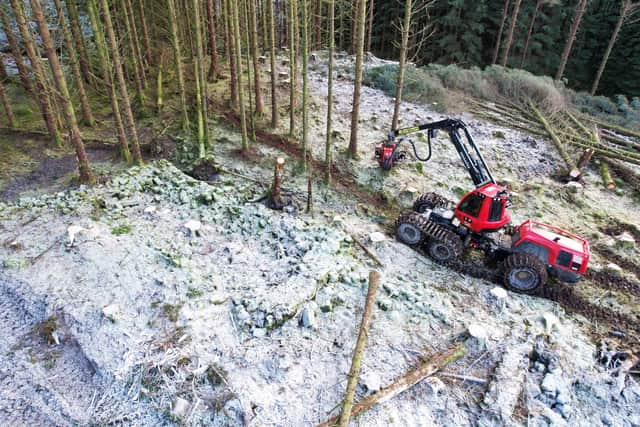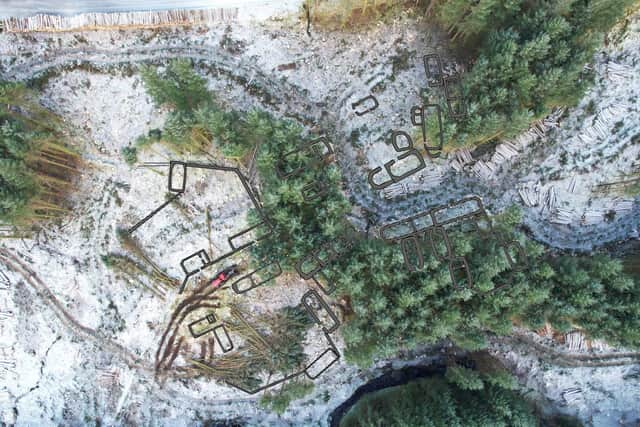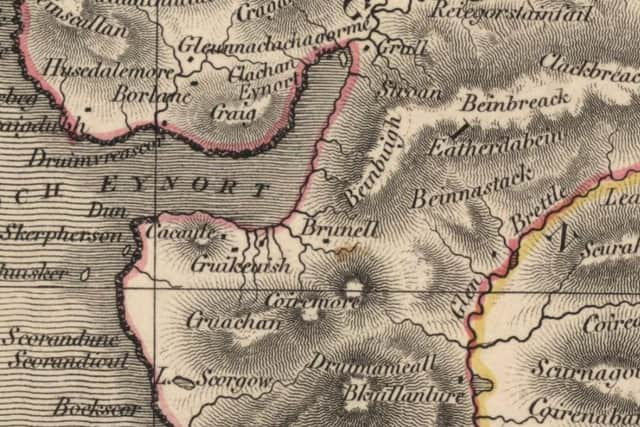Ruins of lost Highland village discovered in Isle of Skye forest
The remains, which include low stone walls and earthen banks, were found in Glen Brittle forest and are likely date back to the 17th and 18th centuries.
They are thought to be what’s left of the houses, byres, barns and corn-drying kilns of a settlement known as Brunell, which was once home to more than 2,000 people.
Advertisement
Hide AdAdvertisement
Hide AdThe township, which appears on ancient maps, was likely deserted as a result of the Highland Clearances – which saw landowners replacing people and homes with giant sheep farms.
The remnants of Brunell had been obscured from view by a commercial Sitka spruce plantation planted in 1977 but were rediscovered by foresters when the trees were due to be harvested.
Forestry and Land Scotland (FLS) brought in archaeologists to examine the site before felling began, in order to safeguard the historical ruins.
A total of 28 buildings were recorded in the survey, clustered together with fields and stock enclosures to form a small township, also known as a clachan, set on terraces on the north side of the Allt Dabhoch burn.


AOC Archaeology studied historical records which suggested the site fell into ruin after the small farms were incorporated into a single large sheep farm.
They discovered that the township is referred to as Brunell on a map created in the early 19th century, surveyed by John Thomson in 1832.
They also consulted statistical accounts for the Parish of Bracadale on Skye, which contained no specific information about the settlement itself but gave general descriptions of life in the area.


The township was deserted by the time of the first Ordnance Survey map, which depicts only two unroofed buildings and a field in 1881.
Advertisement
Hide AdAdvertisement
Hide AdIn recent times some of the old stone walls had been hidden from view by trees blown down in storms.
But a number of the buildings are now visible in cleared areas, while others are still beneath trees.


FLS said small tracks had been laid out so forestry machinery could avoid causing damage to the ruins while the timber was removed.
The operation required skill and careful planning.
A spokesperson for the agency said: “The harvester positions itself to reach over the buildings to carefully fell trees away from their walls into open space, ready for processing into logs, to be neatly stacked ready for removal.”
Comments
Want to join the conversation? Please or to comment on this article.